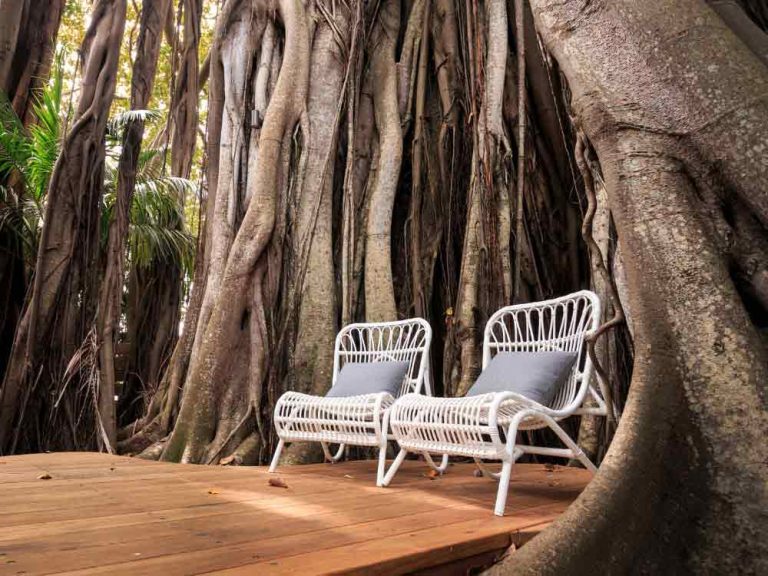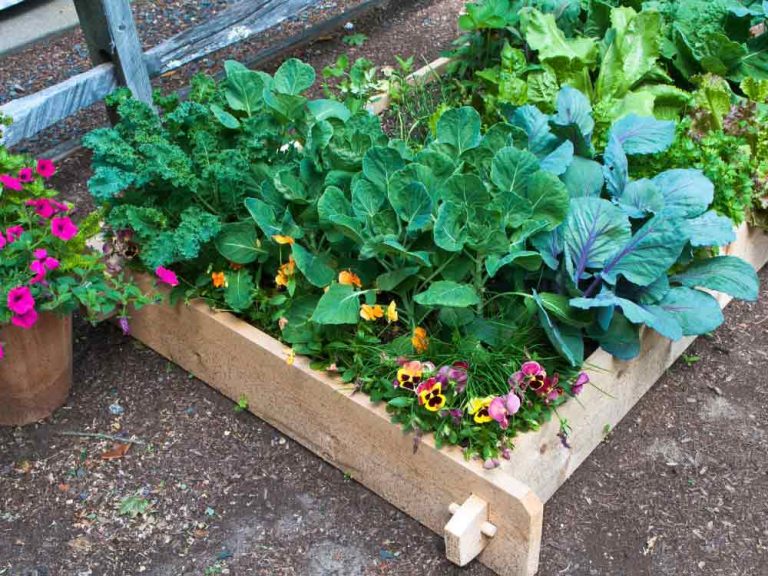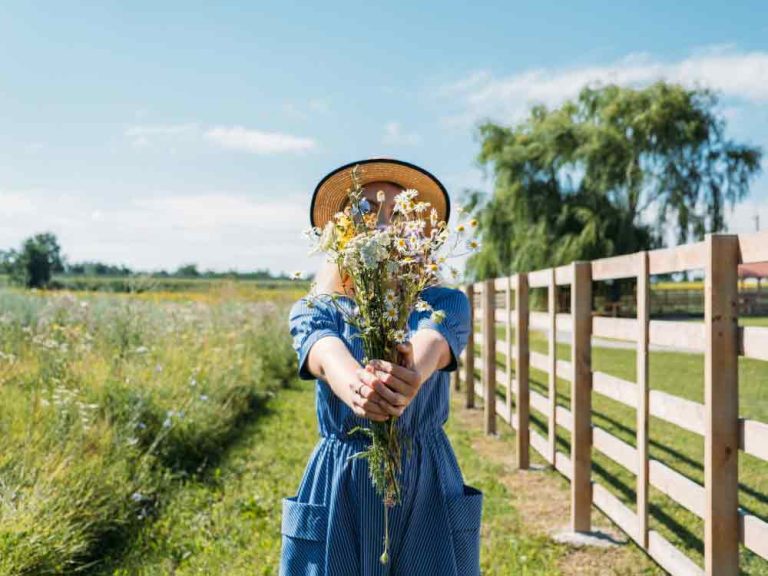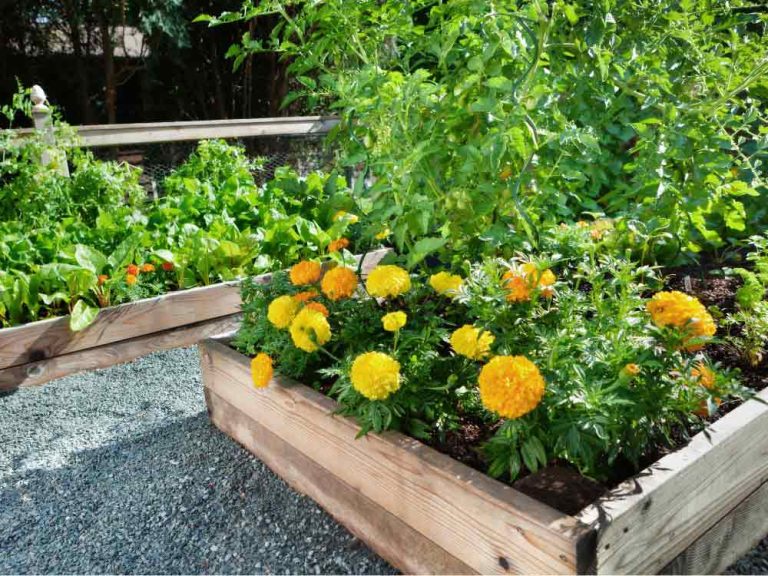Creative Walkway Ideas: Transform Your Outdoor Space with Stunning Pathways
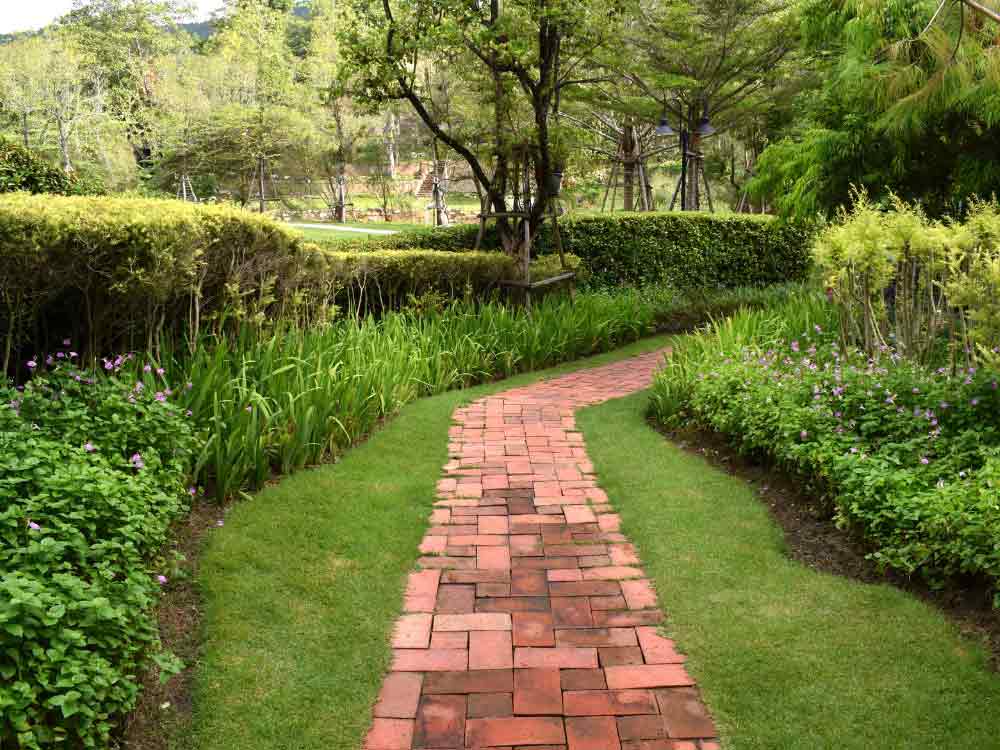
Creating a beautiful walkway is more than just connecting two points in your yard; it’s about crafting a journey that reflects your style, enhances your home’s curb appeal, and invites guests to explore your outdoor sanctuary. Thoughtful pathway design plays a crucial role in achieving this balance, allowing you to express your individual taste while creating functional and inspiring outdoor spaces.
The creative walkway concept embraces diverse materials, unique patterns, and a variety of textures that not only enhance aesthetic appeal but also improve safety and functionality in your outdoor areas.
This article explores a myriad of unique design concepts for creative walkways, showcasing how different styles cater to diverse personalities and lifestyles. From rustic stone paths to modern geometric designs, each walkway has its own distinct character while adhering to the principles of beautiful outdoor design.
Join us on this journey as we delve into 30 captivating walkway concepts, each offering actionable tips and insights for creating your own stunning outdoor pathway.
1. Classic Flagstone Walkway with Natural Spacing
Imagine walking along a charming flagstone pathway where large, irregular stones are set with natural grass growing between the gaps. The warm grey and tan tones of the flagstone create an organic pattern that blends seamlessly with the surrounding landscape.
Low-growing ground cover plants nestle between the stones, adding softness and color to the pathway. The natural spacing allows for excellent drainage while creating a casual, relaxed atmosphere that welcomes visitors to your home.
The overall mood of this walkway is one of timeless elegance and natural beauty. The use of natural stone promotes a sense of permanence, while the organic spacing creates a less formal, more approachable aesthetic.
This design invites leisurely strolls, making it the perfect choice for gardens that emphasize natural beauty and relaxed charm.
- Choose large flagstones in varying sizes for an organic, natural look.
- Allow 2-4 inches between stones for ground cover or grass to grow.
- Select low-maintenance plants like creeping thyme or moss for the gaps.
- Ensure proper base preparation for stability and longevity.
2. Modern Concrete Pavers with Pebble Inlays
This contemporary walkway features sleek rectangular concrete pavers arranged in a linear pattern, with smooth river pebbles filling the spaces between each slab. The contrast between the clean lines of the concrete and the organic texture of the pebbles creates a stunning visual effect.
The neutral grey concrete provides a modern foundation, while the varied colors of the pebbles—ranging from white to charcoal—add natural interest and texture.
This design emphasizes modern minimalism while incorporating natural elements. The combination of man-made and natural materials creates a balanced aesthetic that feels both contemporary and grounded.
The pebbles also provide excellent drainage, making this a practical choice for areas with heavy rainfall.
- Use uniform concrete pavers for a clean, modern appearance.
- Choose smooth river pebbles in complementary colors for visual interest.
- Create consistent spacing between pavers for a rhythmic pattern.
- Ensure proper edging to keep pebbles contained within the pathway.
3. Rustic Brick Walkway in Herringbone Pattern
This classic brick walkway showcases a traditional herringbone pattern that creates movement and visual interest. The warm terracotta and burnt orange tones of the aged bricks evoke a sense of history and charm.
Moss naturally grows between some of the bricks, adding character and a lived-in appeal. The intricate pattern draws the eye forward, guiding visitors along the path while creating a sense of timeless elegance.
The rustic feel of this walkway is amplified by the weathered appearance of the bricks. The herringbone pattern not only looks beautiful but also provides structural stability, distributing weight evenly across the surface.
This design is perfect for cottage gardens, colonial-style homes, or anyone seeking a traditional aesthetic.
- Select clay bricks in warm, earthy tones for a classic appearance.
- Install bricks in a herringbone pattern for visual interest and stability.
- Allow for natural weathering and moss growth for added character.
- Use a sand base for proper drainage and easier future repairs.
4. Stepping Stone Path Through Lush Garden
A whimsical stepping stone walkway winds through a lush garden, with large round stones set at comfortable intervals. Each stone appears to float on a carpet of soft groundcover plants and mulch, creating an enchanting pathway experience.
The irregular placement of the stones adds to the organic, naturalistic feel, while flowering plants border the path on both sides, creating a tunnel of color and fragrance.
This design highlights the beauty of integration between hardscape and landscape. The stepping stones provide function without overwhelming the garden, allowing plants to remain the focal point.
The gentle curves of the path create mystery and interest, inviting exploration of the garden space.
- Use large, flat stones at least 16-18 inches in diameter for stability.
- Space stones 18-24 inches apart for comfortable walking stride.
- Surround stones with low-growing plants for a lush appearance.
- Create gentle curves to add interest and guide visitors through the garden.
5. Decomposed Granite Walkway with Steel Edging
This contemporary walkway features smooth decomposed granite contained by sleek steel edging that creates clean, modern lines. The warm beige color of the granite complements natural surroundings while maintaining a refined appearance.
The firm, compacted surface provides comfortable walking while the permeable material allows excellent water drainage. The steel edging prevents the granite from spreading and adds an industrial-modern accent.
The minimalist aesthetic of this design makes it ideal for contemporary homes and drought-tolerant landscapes. The neutral color and simple form allow surrounding plantings to take center stage.
This walkway offers a softer alternative to concrete while maintaining a polished, intentional look.
- Choose decomposed granite in a color that complements your home’s exterior.
- Install sturdy steel or aluminum edging for clean lines and containment.
- Compact the granite thoroughly for a stable, firm walking surface.
- Plan for occasional re-compacting and top-dressing to maintain appearance.
6. Stained Concrete Walkway with Decorative Scoring
This stunning stained concrete walkway showcases the versatility of concrete as a design material. Deep terracotta stain creates a rich, warm color, while decorative scoring creates the appearance of large tiles or stone slabs.
The smooth surface provides easy walking and wheelchair accessibility, while the scored pattern adds visual interest without requiring individual pavers.
This design demonstrates how concrete can be transformed from utilitarian to beautiful. The stained and scored technique offers the look of expensive materials at a fraction of the cost.
The seamless surface is easy to maintain and perfect for modern or Southwestern-style homes.
- Select acid stains for rich, variegated color that won’t fade.
- Create score lines in geometric patterns for visual appeal.
- Apply a sealer to protect the finish and enhance color depth.
- Consider adding a slight texture for slip resistance in wet conditions.
7. Natural Wood Plank Walkway
This inviting walkway features thick wooden planks laid perpendicular to the path direction, creating a boardwalk effect. The warm honey tones of the treated wood create a welcoming atmosphere, while the natural grain adds organic texture.
Small gaps between planks allow for drainage and prevent water pooling. The elevated design keeps the walkway dry and clean, even after rain.
The rustic charm of this wooden walkway makes it perfect for informal gardens, beach houses, or woodland settings. The natural material blends seamlessly with surrounding vegetation.
This design creates a distinctive sound when walked upon, adding a sensory element to the garden experience.
- Use pressure-treated or naturally rot-resistant wood like cedar or redwood.
- Elevate planks slightly above ground level for drainage and longevity.
- Space planks with small gaps to prevent water accumulation.
- Apply wood sealant annually to protect against weathering and extend life.
8. Mosaic Tile Walkway with Mediterranean Flair
This artistic walkway showcases colorful mosaic tiles arranged in intricate Mediterranean-inspired patterns. Blues, yellows, and terracotta create a vibrant tapestry underfoot, transforming a simple pathway into a work of art.
Geometric patterns and floral motifs add visual interest at every step. The smooth tile surface is easy to clean and maintain, while the bold colors create a cheerful, welcoming atmosphere.
This design brings the beauty of Mediterranean courtyards to your own backyard. The artistic expression makes the walkway a focal point rather than just a functional element.
The colorful patterns can tie together various design elements in your outdoor space.
- Choose frost-resistant tiles if you live in a cold climate.
- Create a stable concrete base for tile installation.
- Use contrasting grout colors to enhance pattern visibility.
- Seal tiles and grout regularly to prevent staining and weathering.
9. Gravel Path with Planted Borders
A classic gravel walkway offers simplicity and natural charm, with small crushed stones creating a neutral-toned pathway. Lush planted borders on both sides create a soft frame, with perennials and ornamental grasses spilling onto the edges.
The crunching sound of footsteps on gravel adds an auditory element to the garden experience. The permeable surface provides excellent drainage while the light color brightens shaded areas.
This design is incredibly versatile and can adapt to various garden styles from formal to cottage. The gravel provides a neutral backdrop that allows plants to shine.
The loose material also makes it easy to adjust path width or direction over time.
- Select pea gravel or crushed stone in a size that’s comfortable to walk on.
- Install landscape fabric underneath to prevent weed growth.
- Use sturdy edging to contain gravel and maintain clean lines.
- Plan for periodic raking and occasional replenishment of gravel.
10. Textured Stamped Concrete with Stone Pattern
This innovative walkway uses stamped concrete technology to recreate the appearance of natural stone at a lower cost. The textured surface mimics the irregular shapes and patterns of flagstone or slate, complete with realistic color variations.
Multiple earth tones create depth and visual interest, while the seamless installation eliminates trip hazards found with individual stones.
The design showcases how modern techniques can achieve traditional aesthetics. The stamped pattern provides traction for safety while maintaining an upscale appearance.
This walkway offers durability and low maintenance without sacrificing beauty.
- Hire experienced contractors for professional stamping results.
- Choose patterns and colors that complement your home’s architecture.
- Apply a quality sealer to protect the surface and enhance colors.
- Consider adding control joints to prevent unsightly cracking.
11. Slate Walkway with Irregular Edges
This elegant walkway features large slate tiles with naturally irregular edges, creating an organic yet refined appearance. The dark grey and purple tones of the slate provide sophisticated contrast against green lawns or garden beds.
The smooth surface of the slate feels cool underfoot and develops a beautiful patina over time. Tight joints minimize weed growth while maintaining the natural aesthetic.
This design balances formality with organic beauty. The upscale appearance of slate elevates the overall garden design while the irregular edges prevent a too-rigid look.
The durable stone withstands heavy foot traffic and all weather conditions.
- Select slate pieces with complementary color variations for visual interest.
- Install on a properly prepared gravel base for stability.
- Keep joints tight to minimize maintenance and weed growth.
- Seal slate to enhance color and protect against staining.
12. Cobblestone Walkway with Old-World Charm
This timeless cobblestone walkway evokes European villages and historic districts. Small rounded stones are tightly packed in traditional patterns, creating a textured surface full of character and history.
The varied colors of the cobblestones—grey, tan, and rust—create a natural mosaic effect. The slightly uneven surface adds rustic appeal and excellent traction.
The old-world charm of this design makes it perfect for traditional homes, historic properties, or anyone seeking a romantic garden aesthetic. The durable stones will last for generations.
The time-intensive installation makes cobblestone a true investment in lasting beauty.
- Source authentic cobblestones or quality reproductions for best results.
- Prepare a solid base with sand and gravel for proper drainage.
- Set stones tightly together to create a stable walking surface.
- Accept the naturally uneven character as part of the authentic appeal.
13. Mulch Pathway with Log Edging
This natural, woodland-style walkway features a soft surface of shredded hardwood mulch contained by rustic log edging. The dark brown mulch contrasts beautifully with the lighter wood tones of the natural logs.
The soft, cushioned surface is comfortable to walk on and particularly suited to informal garden settings. The organic materials blend seamlessly with wooded areas and shade gardens.
This design emphasizes natural materials and informal aesthetics. The mulch pathway is one of the most affordable options while still providing clear definition and function.
The natural decomposition of materials actually enriches the soil over time.
- Choose hardwood mulch for slower decomposition and better longevity.
- Use logs or timber at least 4-6 inches in diameter for substantial edging.
- Apply mulch 3-4 inches deep for adequate coverage and weed suppression.
- Plan to refresh mulch annually as it breaks down and fades.
14. Permeable Paver Walkway with Grass Joints
This eco-friendly walkway features specially designed permeable pavers with open joints that allow grass or groundcover to grow through. The geometric pattern of the pavers creates structure while the green joints soften the hardscape.
The permeable design allows rainwater to soak into the ground rather than running off, reducing erosion and supporting groundwater recharge.
This design perfectly balances environmental responsibility with aesthetic appeal. The combination of hard surface and living plants creates visual interest and texture.
The green joints also help keep the pathway cooler in summer heat.
- Select permeable pavers designed specifically for this application.
- Choose hardy, low-growing grass or groundcover for the joints.
- Ensure proper base preparation for both drainage and plant growth.
- Maintain joint plants with regular mowing or trimming for neat appearance.
15. Curved Stone Aggregate Walkway
This flowing walkway features exposed aggregate concrete in a soft, curved design. Smooth pebbles embedded in the concrete surface create texture and visual interest, while the curved path creates a sense of journey and discovery.
The neutral tones of the aggregate—cream, grey, and tan—work with any landscape style. The textured surface provides excellent traction in all weather conditions.
The graceful curves of this design make the garden feel larger and more interesting by preventing visitors from seeing the entire path at once.
The exposed aggregate technique combines durability with natural beauty.
- Create gentle curves for a natural, flowing appearance.
- Choose aggregate colors that complement your home and landscape.
- Time the installation carefully to expose aggregate at the right stage.
- Seal the surface to protect against staining and weathering.
16. Limestone Slab Walkway with Minimalist Design
This contemporary walkway features large rectangular limestone slabs set with wide joints filled with fine gravel. The clean lines and generous spacing create a minimalist aesthetic that emphasizes simplicity and restraint.
The pale cream color of the limestone brightens the garden while the smooth surface provides comfortable walking. The wide joints create a rhythmic visual pattern.
This design embodies modern design principles where less is more. The generous use of negative space allows each element to breathe and be appreciated.
The minimalist approach works particularly well in contemporary gardens and with modern architecture.
- Select large-format limestone slabs for maximum visual impact.
- Create consistent spacing between slabs for rhythmic effect.
- Use fine gravel or decomposed granite in joints for clean appearance.
- Keep surrounding plantings simple to maintain the minimalist aesthetic.
17. Recycled Brick Walkway with Basket Weave Pattern
This sustainable walkway showcases recycled bricks arranged in a classic basket weave pattern. The varied patina and weathering of the salvaged bricks create instant character and history.
Subtle color variations from brick to brick add depth and visual interest. The basket weave pattern is both attractive and structurally sound, preventing shifting over time.
This design demonstrates how recycled materials can create beautiful, eco-friendly landscapes. Each brick tells a story, giving the pathway immediate charm and character.
The traditional pattern works with virtually any architectural style.
- Source recycled bricks from architectural salvage yards or demolition sites.
- Embrace color and texture variations as part of the aesthetic appeal.
- Install on a proper sand base for stability and drainage.
- Accept chips and imperfections as signs of authentic history.
18. Bluestone Walkway with Geometric Layout
This sophisticated walkway features bluestone pavers in a precisely planned geometric layout. The cool grey-blue tones create a calming, elegant aesthetic, while the rectangular shapes are arranged in a running bond pattern.
Tight joints create clean lines and minimize maintenance. The smooth surface of the bluestone feels refined underfoot while providing excellent durability.
This design exemplifies controlled elegance and attention to detail. The consistent color and careful layout create a sense of order and sophistication.
The timeless appearance ensures this walkway will remain stylish for decades.
- Select premium-grade bluestone with consistent color and thickness.
- Plan the layout carefully for balanced proportions and minimal cutting.
- Use tight joints with quality polymeric sand to prevent weed growth.
- Clean and seal bluestone to maintain color and prevent staining.
19. Wood Chip Pathway for Woodland Gardens
This natural, informal walkway features coarse wood chips creating a soft, rustic path through woodland gardens or shaded areas. The chunky texture and earthy brown tones blend seamlessly with forest floors and naturalistic plantings.
The organic material is comfortable to walk on and provides excellent drainage. As the chips decompose, they enrich the soil and support the ecosystem.
This design is perfect for creating trails through wooded areas or connecting garden rooms in a casual way. The natural material doesn’t compete with surrounding plants.
The soft surface is also ideal for creating quiet pathways where footsteps are muffled.
- Use coarse wood chips or shredded bark for better longevity.
- Apply 3-4 inches deep for adequate coverage and comfort.
- Contain with natural log edging for a cohesive woodland aesthetic.
- Replenish annually as material decomposes and compacts.
20. Travertine Pavers with Mediterranean Elegance
This luxurious walkway showcases travertine pavers in warm cream and beige tones. The naturally textured surface of the travertine provides traction while the porous stone stays cool underfoot even in hot weather.
The Mediterranean aesthetic is enhanced by the stone’s subtle color variations and natural pitting. Tight joints maintain clean lines while the warm tones create an inviting atmosphere.
This design brings resort-style elegance to residential landscapes. The natural beauty of travertine elevates the entire outdoor space.
The stone’s light color reflects sunlight, making pathways feel brighter and more spacious.
- Choose tumbled or textured travertine for slip resistance and casual appeal.
- Fill natural holes in the stone for easier cleaning and maintenance.
- Install on a proper base to prevent settling and cracking.
- Seal travertine to protect against stains and weather damage.
21. Concrete Stepping Stones with Modern Edge
This contemporary walkway features large square concrete stepping stones set in a bed of smooth black pebbles. The contrast between the grey concrete and dark stones creates dramatic visual impact.
The geometric shapes and precise spacing create a modern, architectural aesthetic. The substantial size of each stepping stone provides stability and presence.
This design showcases how simple materials can create striking effects through thoughtful arrangement. The bold contrast makes the pathway a sculptural element in the landscape.
The modern aesthetic works perfectly with contemporary homes and minimalist gardens.
- Cast custom concrete stepping stones for perfect size and consistency.
- Space stones evenly for rhythmic visual effect and comfortable walking.
- Choose premium pebbles in a contrasting color for maximum impact.
- Keep surrounding areas clean and maintained to enhance the modern aesthetic.
22. Antique Brick Walkway with Soldier Course Border
This elegant walkway features weathered antique bricks laid in a running bond pattern, framed by a soldier course border where bricks stand on end. The warm red and orange tones create a welcoming glow.
The border treatment elevates the design from simple to sophisticated, creating clear definition and visual interest. Natural weathering and color variations add authentic character.
This design combines traditional materials with thoughtful detailing. The soldier course border is a classic technique that adds refinement and polish.
The warm brick tones create inviting pathways that beckon visitors forward.
- Source antique or reclaimed bricks for instant character and history.
- Install border bricks vertically (on end) for the soldier course effect.
- Use contrasting mortar or sand colors to highlight the pattern.
- Accept color variations as desirable elements that add authenticity.
23. Pea Gravel and Pavers Combination
This practical walkway combines square concrete pavers set in a grid pattern with pea gravel filling the spaces between. The geometric layout provides stable stepping surfaces while the gravel adds texture and allows drainage.
The neutral color palette works with any style, while the combination of materials balances hard and soft elements. The pea gravel provides a pleasant crunching sound with each step.
This design offers flexibility and economy. The combination approach uses fewer pavers than a solid installation while maintaining function and beauty.
The gravel also makes the pathway more permeable and environmentally friendly.
- Space pavers consistently for visual rhythm and comfortable walking.
- Choose pea gravel in a complementary color for cohesive appearance.
- Install landscape fabric under gravel to prevent weed growth.
- Edge the pathway to contain gravel and maintain clean borders.
24. Painted Concrete with Colorful Design
This creative walkway transforms basic concrete into a colorful artistic statement. Painted in vibrant patterns—perhaps geometric designs, faux tiles, or even murals—the concrete becomes a canvas for personal expression.
Durable concrete paint and quality sealers ensure the design withstands foot traffic and weather. The smooth surface is easy to maintain while the colors add personality and whimsy.
This design proves that budget-friendly materials can still create stunning results with creativity. The painted approach allows for complete customization.
The colorful pathway can tie together various colors from your home and garden.
- Prepare concrete surface properly with cleaning and etching for paint adhesion.
- Use exterior-grade concrete paint designed for high-traffic areas.
- Apply multiple thin coats rather than one thick coat for durability.
- Seal with a quality concrete sealer to protect the painted design.
25. Rubber Paver Walkway for Safety and Comfort
This innovative walkway features rubber pavers made from recycled materials, offering a soft, cushioned surface that’s comfortable to walk on and safe in case of falls. The textured surface provides excellent traction in all weather.
Available in various colors and patterns, rubber pavers can mimic the look of brick, stone, or create contemporary designs. The permeable material allows water drainage while the shock-absorbing quality makes it ideal for children and elderly users.
This design prioritizes safety and sustainability without sacrificing aesthetics. The recycled rubber gives new life to old tires while creating a practical, long-lasting surface.
The low-maintenance material resists fading, cracking, and weathering.
- Choose quality rubber pavers specifically designed for outdoor use.
- Select colors that complement your landscape and won’t show dirt easily.
- Install on a properly prepared base for drainage and stability.
- Clean periodically with soap and water to maintain appearance.
26. Shell Pathway for Coastal Gardens
This charming coastal walkway features crushed shells creating a bright, beach-inspired surface. The white and cream tones reflect sunlight beautifully while the crunching texture evokes seaside memories.
The natural calcium in shells gradually enriches the soil as they break down. The light color keeps the pathway cooler in hot weather while providing excellent drainage.
This design is perfect for coastal properties or anyone wanting to bring beach vibes to their garden. The natural material blends beautifully with beach grasses and coastal plants.
The shell pathway creates instant vacation ambiance in your own backyard.
- Source crushed shells from local suppliers for best value.
- Apply shells 3-4 inches deep for adequate coverage.
- Use edging to contain shells and maintain pathway boundaries.
- Refresh shells periodically as they break down and settle into soil.
27. Interlocking Concrete Pavers in Fan Pattern
This eye-catching walkway features interlocking concrete pavers arranged in an elegant fan pattern. The curved arrangement creates movement and visual flow, while multiple colors add depth and dimension.
The interlocking design provides excellent stability and prevents shifting over time. The varied pattern makes the pathway a focal point in the landscape.
This design demonstrates how standard materials can create extraordinary results with thoughtful layout. The fan pattern draws the eye and creates interest at every turn.
The durable pavers will maintain their beauty for decades with minimal maintenance.
- Choose pavers specifically designed for interlocking installation.
- Work with experienced installers to achieve proper fan pattern layout.
- Select 2-3 coordinating colors for visual interest without chaos.
- Use edge restraints to maintain pattern integrity over time.
28. Natural Stone Steps with Plantings
This charming walkway features flat natural stone steps ascending a slope, with low-growing plants spilling over the edges. The irregular shapes and warm tones of the stone create rustic elegance.
Creeping thyme, sedum, or other groundcovers soften the hard edges and add color and fragrance. The natural stone provides stable footing while blending beautifully with the landscape.
This design shows how hardscape and plants can work together harmoniously. The integration creates a pathway that feels like a natural part of the garden rather than an addition.
The planted edges also help prevent erosion on slopes.
- Select flat stones with level surfaces for safe stepping.
- Space steps appropriately for comfortable climbing.
- Choose hardy, low-growing plants that can tolerate foot traffic.
- Ensure proper drainage to prevent water accumulation on steps.
29. Resin-Bound Gravel for Smooth Surface
This modern walkway features resin-bound gravel creating a smooth, permeable surface with natural stone appearance. Small stones are held in clear resin, creating a stable, weed-resistant surface that allows water drainage.
The seamless installation eliminates trip hazards while the natural stone colors provide warmth and texture. The smooth surface is easy to walk on and wheelchair accessible.
This design offers the natural beauty of gravel without the maintenance challenges. The resin binding prevents stones from scattering while maintaining permeability.
The modern technique combines aesthetics with practical performance.
- Hire professional installers for proper resin-bound application.
- Choose stone colors that complement your landscape design.
- Ensure proper base preparation for long-lasting results.
- Maintain with occasional power washing to keep surface clean.
30. Mixed Material Walkway with Creative Design
This artistic walkway combines multiple materials—brick, stone, concrete, and pebbles—in a creative, eclectic design. Different sections feature different materials or patterns, creating a pathway full of visual interest and surprise.
The mixed approach allows for personal expression and creativity. Transitions between materials are thoughtfully designed to create cohesion despite the variety.
This design proves that rules are made to be broken. The eclectic approach creates a one-of-a-kind pathway that reflects individual personality.
The varied textures and materials make the journey along the path an experience in itself.
- Plan the overall design before starting to ensure good flow between sections.
- Use consistent colors or themes to tie different materials together.
- Pay attention to height transitions between different materials for safety.
- Embrace creativity while maintaining functionality and durability.
Conclusion
Creating a beautiful walkway is an art that blends functionality, aesthetics, and personal expression. Each design concept highlighted here offers unique insights into how to incorporate various materials, patterns, and styles into your outdoor space.
Whether you prefer the rustic charm of natural stone, the clean lines of modern concrete, or the warmth of traditional brick, these ideas provide a wealth of inspiration. Don’t hesitate to experiment with these concepts to create your own stunning pathway that reflects your personality and enhances your home’s outdoor beauty.
Remember that the best walkway design considers not only aesthetics but also practical factors like climate, maintenance requirements, budget, and how the pathway will be used. Take time to plan carefully, and your creative walkway will provide beauty and function for years to come.

